
The Brisbane Water National Park is a protected national park that is located in the Central Coast region of New South Wales, in eastern Australia. The 11,506-hectare (28,430-acre) national park is situated 47 kilometres (29 mi) north of Sydney, 10 kilometres (6.2 mi) west of Woy Woy, and 12 kilometres (7.5 mi) southwest of Gosford.
Wildcrafting is the practice of harvesting plants from their natural, or 'wild' habitat, primarily for food or medicinal purposes. It applies to uncultivated plants wherever they may be found, and is not necessarily limited to wilderness areas. Ethical considerations are often involved, such as protecting endangered species, potential for depletion of commonly held resources, and in the context of private property, preventing theft of valuable plants, for example, ginseng.

Echinacea tennesseensis, also known as the Tennessee coneflower or Tennessee purple coneflower, is a flowering plant in the family Asteraceae, endemic to the cedar glades of the central portion of the U.S. state of Tennessee.
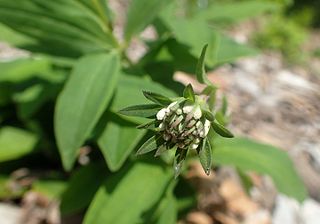
Marshallia is a genus of plants in the tribe Helenieae within the family Asteraceae. Marshallia is native to the southeastern and south-central United States. A common name applied to most species in the genus is Barbara's buttons.

Iris lacustris, the dwarf lake iris, is a plant species in the genus Iris, subgenus Limniris and in the section Lophiris. It is a rhizomatous, beardless perennial plant, native to the Great Lakes region of eastern North America. It has lavender blue or violet-blue flowers, a very short stem and long fan-like green leaves. It is cultivated as an ornamental plant in temperate regions. It is closely related to Iris cristata.
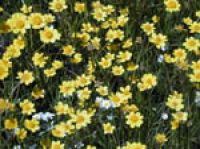
Lasthenia conjugens, commonly known as Contra Costa goldfields, is an endangered species of wildflower endemic to a limited range within the San Francisco Bay Area of the state of California, USA. Specifically this rare species occurs in Napa, Santa Barbara, Solano, Contra Costa, Santa Clara, Monterey and Alameda Counties. This annual herb typically flowers from March through June, and its colonies grow in vernal pool habitats at elevations not exceeding 100 meters above sea level. The Jepson Manual notes that the present distribution is limited to the deltaic Sacramento Valley, principally Napa and Solano Counties, but the historic range of L. conjugens is known to be significantly wider. In any case, historically the range has included parts of the North Coast, Sacramento Valley, and San Francisco Bay Area as well as the South Coast. Alternatively and less frequently this taxon has been referred to as Baeria fremontii var. conjugens.

Banara vanderbiltii is a rare species of plant in the willow family known by the common name Palo de Ramón. It is originates from Puerto Rico in the hills of Rio Lajas, and the east peak of "Tetas de Cayey" mountains in Salinas, where there are fewer than 20 known individuals left in the wild. At the time it was listed as an endangered species of the United States in 1987, there were only six plants remaining.

The Loch Lomond Vernal Pool Ecological Reserve is a nature reserve of 8.22 acres (33,300 m2) in the community of Loch Lomond in Lake County, California. It is one of 119 ecological reserves managed by the California Department of Fish and Game (CDFG). The ecological reserve system was authorized by the state legislature in 1968 for the purpose of conservation and protection of rare plants, animals and habitats.
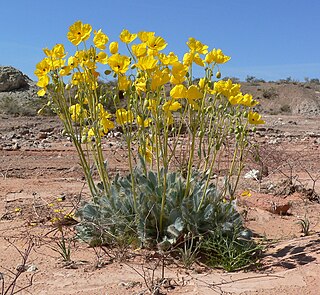
Arctomecon californica is a species of poppy known by several common names, including California bearpoppy, Las Vegas bearpoppy, golden bearpoppy, and yellow-flowered desert poppy. It is a perennial herb that is native to the eastern Mojave Desert.
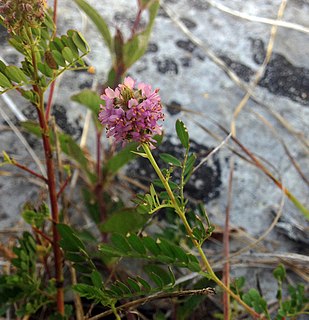
Dalea foliosa, commonly called leafy prairie clover, is a species of flowering plant in the legume family (Fabaceae). It is an endangered species in the United States, where it occurs in three states: Illinois, Tennessee, and Alabama.
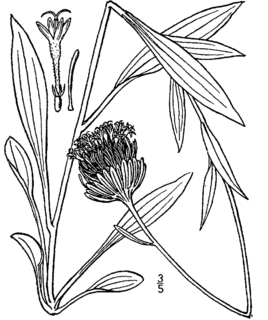
Marshallia grandiflora, the Appalachian Barbara's buttons, is an extinct species of flowering plant in the genus Marshallia within the sunflower family. It was endemic to the Blue Ridge Mountains of North Carolina in the Eastern United States, in Henderson and Polk counties. It was found primarily along gravelly and sandy bars along high-gradient rivers, and was presumably wiped out due to changes in this restricted habitat. It was last sighted in 1919.
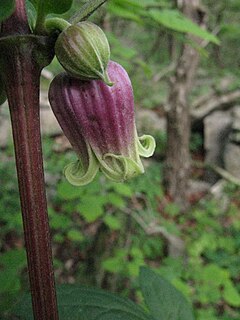
Clematis morefieldii is a rare species of flowering plant in the buttercup family known by the common names Morefield's leather flower and Huntsville vasevine.

Clematis socialis is a rare species of flowering plant in the buttercup family known by the common name Alabama leather flower. It is native to the US states of Alabama and Georgia, where it is known from only five populations. The species is seriously threatened by habitat destruction. It is a federally listed endangered species.
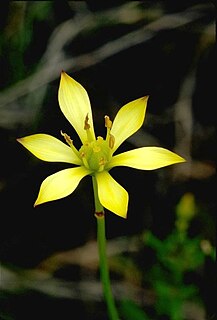
Harperocallis flava, known by the common name Harper's beauty, is a species endemic to parts of Florida in the United States, where it is known mainly from the Apalachicola National Forest in the Panhandle. It is seriously endangered and has been on the United States' endangered species list since 1979.

Physaria filiformis is a rare species of flowering plant in the family Brassicaceae known by the common names Missouri bladderpod and limestone glade bladderpod. It is native to Missouri and Arkansas in the United States. It was federally listed as an endangered species in 1987 and it was downlisted to threatened status in 2003. P. filiformis remains listed as an endangered species at the state level in Missouri.

Spigelia gentianoides is a rare species of flowering plant in the Loganiaceae known by the common names purpleflower pinkroot and gentian pinkroot. It is native to Alabama and Florida in the United States, where a few small populations remain. It is threatened by the loss and degradation of its habitat, and is a federally listed endangered species of the United States.
Leavenworthia crassa is a species of flowering plant in the mustard family, Brassicaceae, known commonly as the fleshy-fruit gladecress. It is endemic to Alabama in the United States, where it occurs in only two counties. It is "likely one of the most imperiled plant species in the Southeast," and the United States Fish and Wildlife Service issued a final rule listing it as an endangered species in 2014.

Silphium mohrii, known by the common names Mohr's rosinweed and shaggy rosinweed, is a species of flowering plant in the family Asteraceae. It is native to the Southeastern United States, where it is native only to northern Alabama, southern Tennessee, and extreme northwest Georgia. It is native to prairie remnants and rocky limestone openings. Because of its restricted range and severely declined habitat, it is considered a vulnerable species.
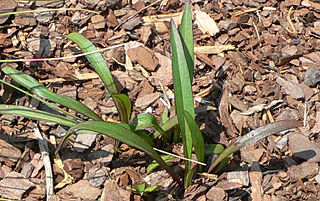
Marshallia graminifolia is a perennial herb species, endemic to the coastal plains of the Southern United States, where it often grows in bogs and in sunny locations. Like all species in the genus Marshallia, it has the common name Barbara's buttons, and is specifically known as grassleaf Barbara's buttons.

Croton alabamensis var. texensis is a variety of Croton alabamensis that is endemic to the state of Texas in the United States. It is commonly known as the Texabama croton.



















